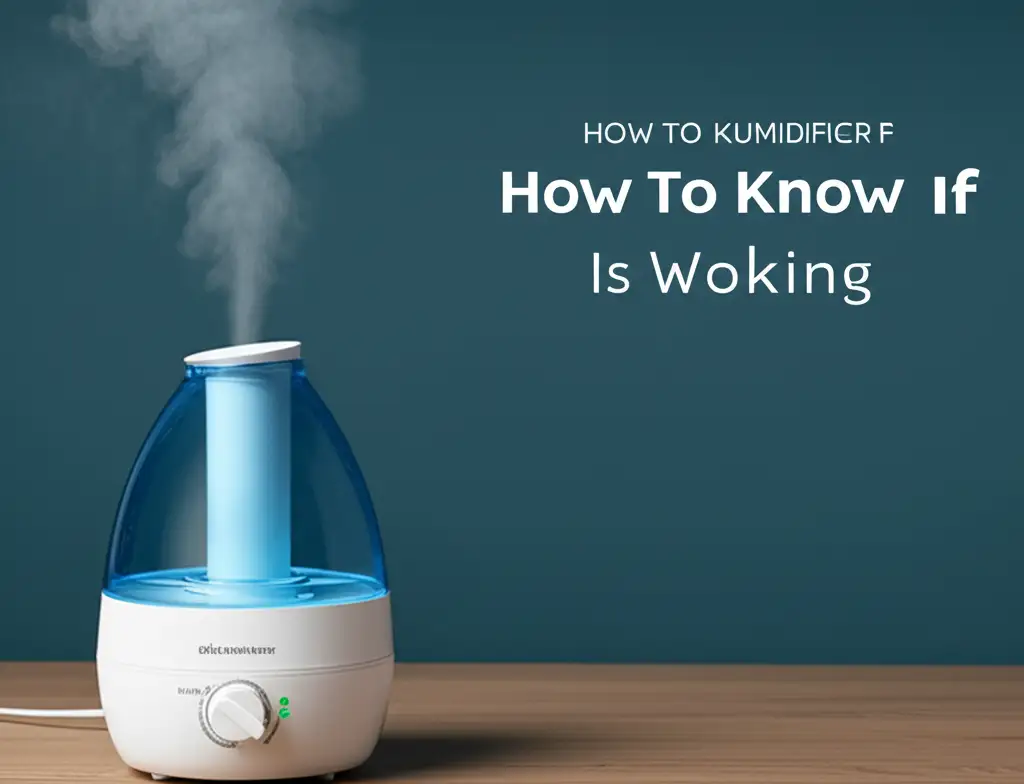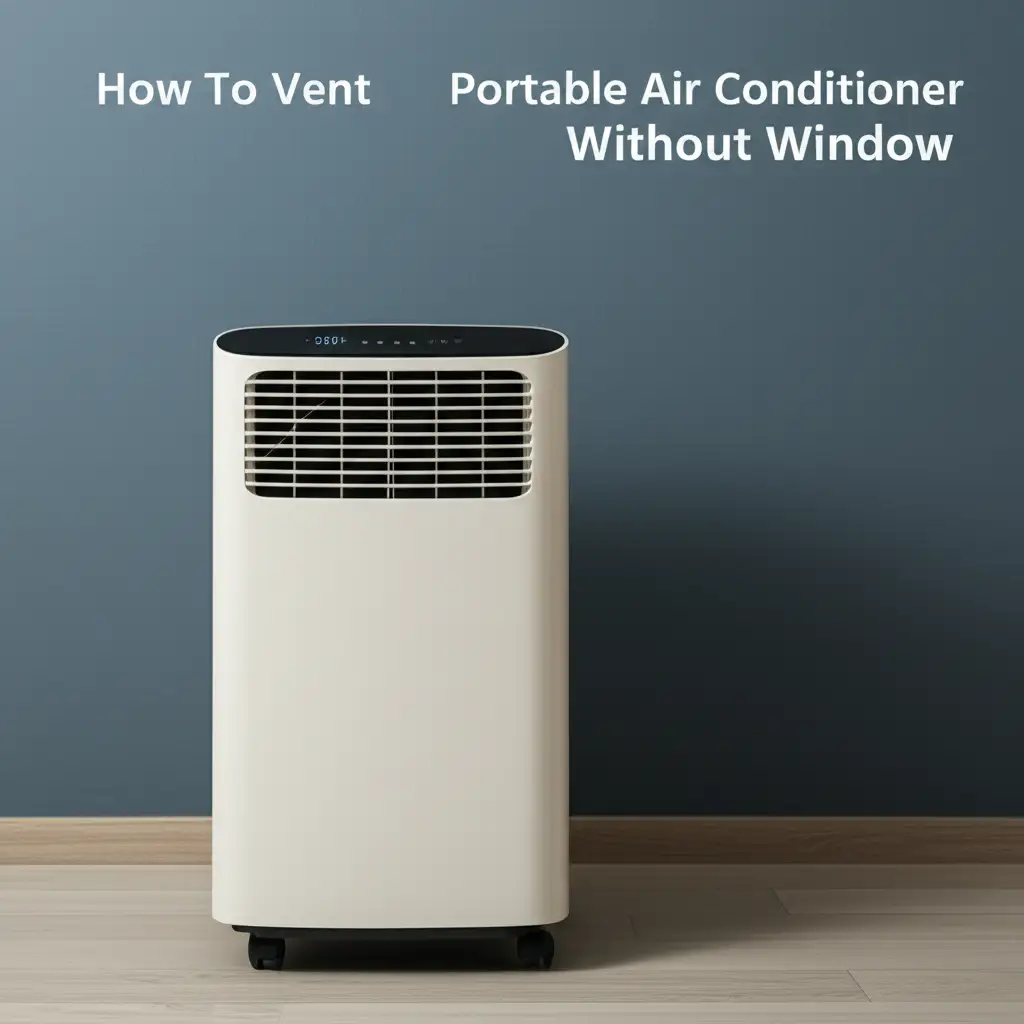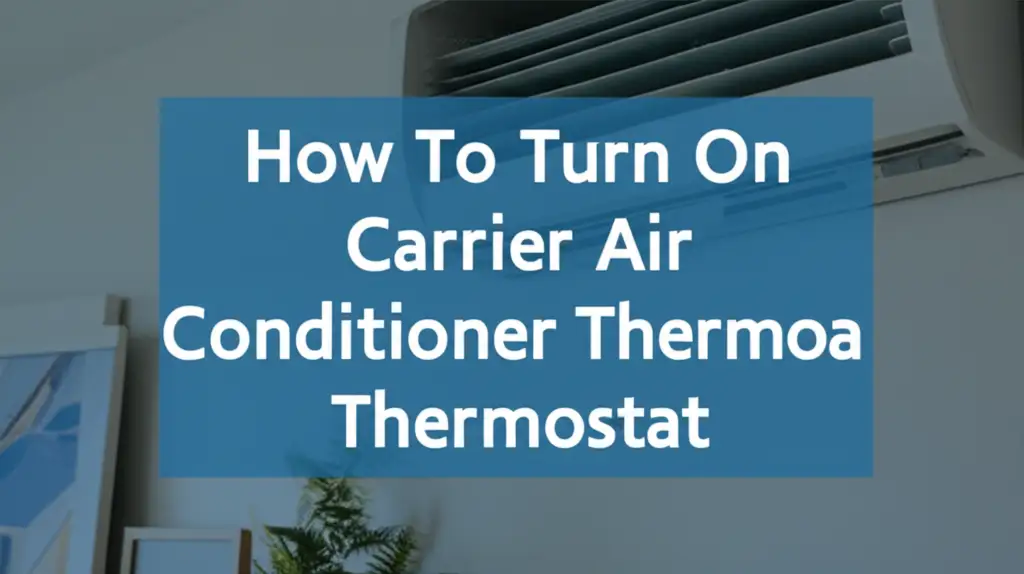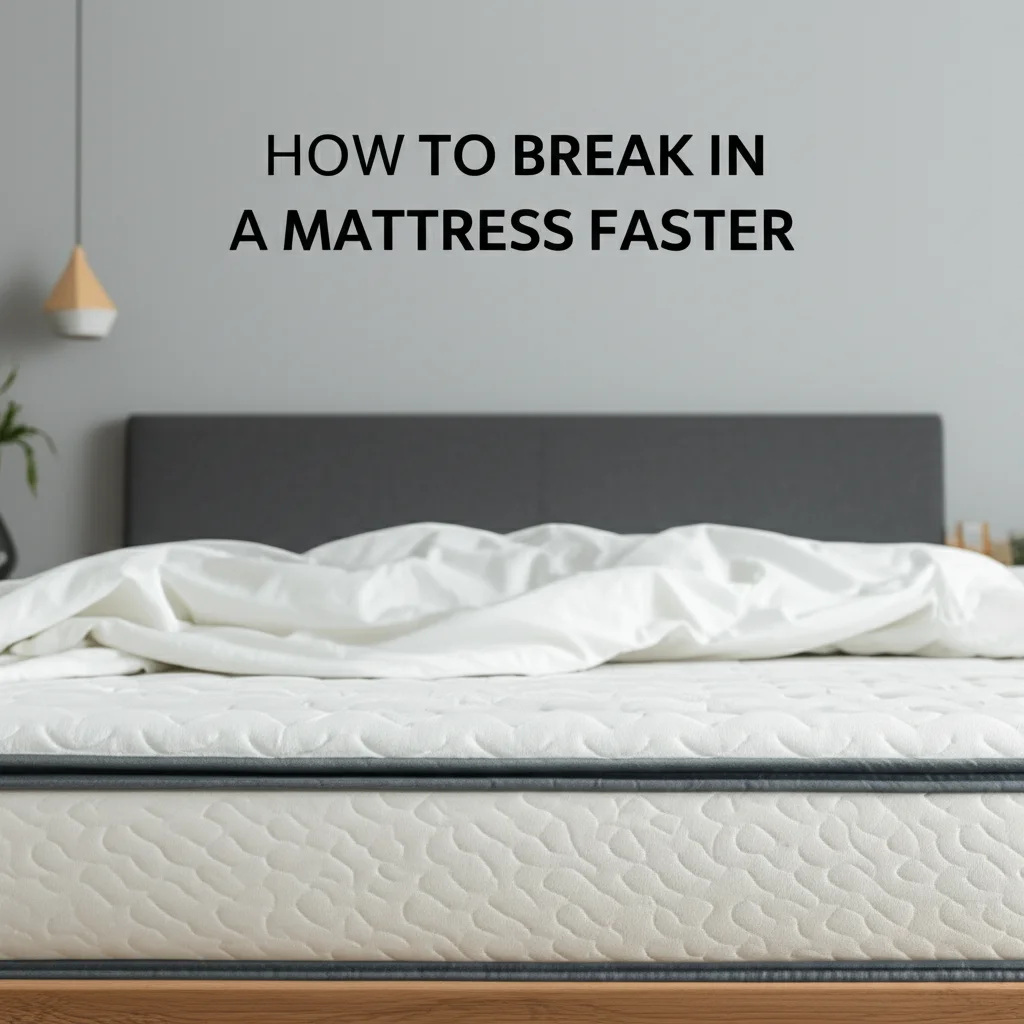· Katria Melrose · Home Comfort · 19 min read
How To Know If Vicks Humidifier Is Working

Is Your Vicks Humidifier Working? Simple Checks & Solutions
It feels good when your Vicks humidifier is working as it should. A well-functioning humidifier adds much-needed moisture to dry indoor air. This helps relieve symptoms like dry skin, irritated throats, and stuffy noses. But what if you are unsure if your Vicks humidifier is doing its job? It can be tricky to tell sometimes.
This guide provides simple steps to determine if your Vicks humidifier is working effectively. We will cover visual cues, sounds, and even touch tests. You will learn about monitoring humidity levels and addressing common issues. Understanding these signs helps you maintain your humidifier. It also ensures you get the full benefits of a comfortably humidified home.
Takeaway:
- Observe Mist Output: A steady, visible mist or steam indicates proper function.
- Listen for Operation Sounds: A gentle hum or gurgle suggests the motor and water flow are active.
- Feel the Air: The air around the humidifier should feel cooler (cool mist) or warmer (warm mist) and noticeably moister.
- Check Room Humidity: Use a hygrometer to confirm the room’s humidity level is increasing towards the ideal range (40-60%).
- Inspect Lights & Components: Ensure indicator lights are on and parts are clean and correctly assembled.
A Vicks humidifier is working if it produces a visible mist or steam, operates with a consistent, quiet hum, and steadily increases the room’s humidity as measured by a hygrometer. You should also notice physical signs like condensed moisture nearby and improved air comfort. If these signs are absent, troubleshooting may be needed.
Visual Cues: What Your Vicks Humidifier Should Show You
The most direct way to check if your Vicks humidifier is working is to look at it. A functioning humidifier visibly interacts with the air. It releases moisture into your room. This release of moisture is the primary indicator of its operation.
Observing Mist or Steam Output
A key sign of a working Vicks humidifier is the mist or steam it produces. For cool mist models, you should see a fine, steady stream of mist rising from the nozzle. This mist often appears as a light, white vapor. If you have a warm mist model, you will see a plume of warm steam. This steam comes out of the top vent. Both types of output should be consistent.
Sometimes, the mist might be hard to see in a brightly lit room. Try moving the humidifier to a darker spot or shining a flashlight across the output. This helps to make the mist more visible. If there is no mist or the output is weak, it suggests a problem. A weak output means your humidifier is not releasing enough moisture. You may need to troubleshoot why your Vicks humidifier is not producing steam. How to get my Vicks humidifier to steam can provide specific steps.
Checking Indicator Lights
Vicks humidifiers come with various indicator lights. These lights show the humidifier’s status. Most models have a power indicator light. This light typically glows green or blue when the unit is on. If this light is off, the humidifier might not be receiving power. Check the power cord and outlet first.
Some Vicks models also have specific indicator lights for low water or cleaning. A red light often means the water tank is empty or very low. If this light is on, refill the tank. An orange or yellow light might indicate a cleaning reminder or a calcification issue. If you see unusual lights, consult your humidifier’s manual. Lights provide clear signals about the unit’s internal state.
Looking for Water Usage
A Vicks humidifier works by converting water into mist or steam. Over time, the water level in the tank should decrease. If you fill the tank and check it several hours later, you should see a noticeable drop in the water level. This confirms that the humidifier is using water. If the water level remains unchanged, the unit is not processing water.
This lack of water usage indicates that the humidifier is not releasing moisture into the air. It could be due to a clog, a faulty motor, or improper assembly. Always make sure the tank is seated correctly. Also, ensure all components are properly aligned before operation. Consistent water consumption is a strong sign of effective humidification.
Condensation on Nearby Surfaces
As a humidifier adds moisture to the air, some of that moisture might condense. You might notice a light film of moisture on nearby windows or cool surfaces. This is often a sign of high humidity levels. It indicates the humidifier is working well. However, too much condensation can lead to mold growth.
Excessive condensation means the humidity is too high. This is a sign the humidifier is working too much, or the room is too small for the setting. Aim for a balanced level of moisture. A little condensation is normal, especially on windows. But large water droplets or puddles mean you should reduce the humidifier’s output. Adjust the settings to a lower level.
Auditory Signals: Listening for Proper Operation
Beyond what you can see, what you hear also tells you if your Vicks humidifier is working. Humidifiers are not silent machines. They produce distinct sounds during operation. These sounds can confirm the unit’s activity. They can also alert you to potential problems. Pay attention to the types of noises your humidifier makes.
The Gentle Hum of the Motor
A Vicks humidifier, especially a cool mist model, uses a motor to create vibrations. These vibrations turn water into a fine mist. You should hear a quiet, consistent hum. This hum indicates the motor is running. It means the unit is actively working to produce moisture. This sound should be soft and not disruptive.
If you hear no hum at all, the motor might not be engaging. This suggests a power issue or a mechanical failure. Conversely, a loud, grinding, or buzzing sound is also a red flag. Unusual noises can signal a problem with the motor or internal components. Always listen for a consistent, low-level operational hum. This sound ensures the unit is running smoothly.
Water Gurgling or Bubbling
Water gurgling is a normal sound for many Vicks humidifiers. This sound occurs as water from the main tank flows into the reservoir. This reservoir is where the mist or steam is generated. You might hear occasional bubbling or gurgling noises. These sounds indicate that water is successfully transferring. It means the humidifier is continuously supplying itself with water.
If you don’t hear any gurgling, the water might not be flowing properly. This could be due to blockages or an incorrectly placed tank. Ensure the water tank is correctly seated on the base. Check for any debris that might impede water flow. Consistent gurgling shows the water supply system is working. This is a good sign for continuous operation.
Absence of Loud or Unusual Noises
A well-maintained Vicks humidifier should operate relatively quietly. There should be no loud clicks, grinding, or rattling sounds. These types of noises often point to internal issues. They might suggest a loose part or mineral buildup. For instance, a loud fan noise in a cool mist humidifier might mean the fan is obstructed.
If your humidifier starts making unusual noises, it is time to investigate. First, unplug the unit for safety. Then, check for any visible obstructions or loose parts. Sometimes, a simple cleaning can resolve strange noises. Mineral buildup can interfere with moving parts. If the noise persists, it might need professional servicing. Addressing unusual sounds early prevents further damage.
Tactile Checks: Feeling the Humidity Change
Beyond seeing and hearing, you can use your sense of touch to gauge your Vicks humidifier’s performance. The air around the unit and in the room should feel different. This change indicates whether moisture is being added effectively. These tactile checks offer direct proof of humidification.
Feeling the Mist or Steam Directly
Place your hand a few inches above the mist outlet. For a cool mist humidifier, you should feel a cool, fine spray on your skin. It should feel like a light, refreshing breeze. For a warm mist humidifier, you should feel distinct warm steam. The steam should be noticeable but not scalding hot. Feeling this output confirms the mist is being produced.
If you do not feel anything, or the sensation is very weak, the humidifier is likely not working well. This might mean the unit is clogged. It could also suggest insufficient water supply or a problem with the misting mechanism. Always ensure the unit is on and has enough water before performing this check. A clear, consistent feel of mist is a direct indicator of function.
Noticing Changes in Room Air Quality
Over several hours, a working Vicks humidifier should make the room air feel more comfortable. Dry air often feels irritating and can cause static electricity. With a working humidifier, the air should feel softer and less dry. You might notice less static and improved comfort in your breathing. This is a subjective test, but an important one.
Pay attention to your body’s response. Do your nasal passages feel less dry? Is your skin less itchy? Are your eyes more comfortable? These subtle changes indicate that the air’s moisture content is improving. If the air still feels dry after extended use, the humidifier might not be effective for the room size. Or, it could be experiencing a significant issue.
Checking for Mineral Deposits or Buildup
Humidifiers use water, and tap water often contains minerals. Over time, these minerals can build up inside the unit. This buildup is often white or crusty. You might feel these deposits on internal components. A working humidifier might have some normal buildup. However, excessive buildup can hinder performance.
Run your finger along the internal surfaces. Pay attention to the water tank and the base. If you feel thick, crusty layers, it is time for a thorough cleaning. Mineral buildup reduces efficiency. It can also lead to strange odors or a decrease in mist output. Regular cleaning prevents these issues. Cleaning ensures the humidifier operates at its best. How to clean Vicks humidifier explains the process.
Monitoring Room Humidity Levels
While visual and tactile checks are helpful, a precise way to know if your Vicks humidifier is working is by measuring the actual humidity. Our senses can sometimes be unreliable. A hygrometer gives you an objective reading of the moisture in the air. This tool helps you maintain optimal humidity levels.
Using a Hygrometer
A hygrometer is a device that measures humidity. You can buy one affordably online or at most hardware stores. Place the hygrometer in the room where your Vicks humidifier is running. Do not place it right next to the humidifier. Give it some distance, preferably across the room, to get an accurate reading of the overall room humidity.
Monitor the readings on the hygrometer over time. When your humidifier is off, the humidity might be low, perhaps below 30%. With a working humidifier, you should see the humidity level steadily increase. It should aim for an ideal range of 40-60%. If the numbers do not change, or only increase slightly, your humidifier is not effectively adding moisture.
Understanding Ideal Humidity Ranges
The ideal indoor humidity level is between 40% and 60%. Levels below this range can lead to dry skin, respiratory irritation, and static electricity. Levels above 60% can promote mold growth and dust mites. A working Vicks humidifier helps you achieve this balance. It prevents the air from becoming too dry.
If your hygrometer consistently shows readings below 40% even with the humidifier running, it indicates a problem. The humidifier might be too small for the room. It could also have an issue affecting its output. Conversely, if it goes above 60%, the humidifier might be too large or running on too high a setting. Monitoring these numbers ensures both comfort and health.
Room Size and Humidifier Capacity
The size of your room affects how well your Vicks humidifier works. Humidifiers have different capacities, measured in square feet. A small humidifier in a large room will struggle to raise the humidity. It will seem like the humidifier is not working, even if it is producing mist. Always match your humidifier’s capacity to your room size.
If your humidifier is running constantly but the humidity remains low, it might be undersized. Consider moving it to a smaller room. Or, upgrade to a more powerful model for the larger space. This ensures the unit can effectively humidify the area. Understanding capacity prevents frustration and ensures effective operation.
Addressing Common Performance Issues
Sometimes, a Vicks humidifier appears not to be working, but it simply needs attention. Common issues often have straightforward solutions. Identifying these problems helps you troubleshoot effectively. Many minor problems can be fixed without needing a new unit.
Low Mist Output or No Mist
This is one of the most common complaints. If your Vicks humidifier produces very little or no mist, check a few things. First, ensure the water tank is full. Many humidifiers stop misting when the water level is too low. Second, check for mineral buildup. Hard water can clog the transducer (for cool mist) or heating element (for warm mist). Why does my Vicks humidifier keep spitting out water might also be related to clogs.
Regular cleaning is crucial for mist output. Use a descaling solution or white vinegar to remove mineral deposits. Ensure the air vents are not blocked. Sometimes, simply taking the unit apart and reassembling it carefully can resolve minor alignment issues. If these steps do not help, the internal components might be faulty.
Humidifier Turning Off Unexpectedly
Does your Vicks humidifier keep turning off on its own? This is often a safety feature or a sign of low water. Most Vicks humidifiers have an automatic shut-off when the water tank is empty. This prevents the unit from overheating. Check the water level first and refill it if needed.
If the tank is full, the auto shut-off might be malfunctioning. Overheating can also trigger a shut-off. Ensure the unit has proper ventilation. Make sure nothing is blocking the air intake or exhaust vents. For persistent issues, the internal sensors might need recalibration or replacement. Why does my Vicks humidifier keep turning off offers more details.
Leaking Water
A Vicks humidifier should not leak water. If you notice water pooling around the base, it indicates a problem. Leaks often occur due to improper assembly of the water tank. Ensure the tank is securely seated on the base. The cap on the water tank might also be loose or damaged. Tighten the cap or check its rubber seal.
Cracks in the water tank or base can also cause leaks. Inspect the unit carefully for any visible damage. Overfilling the tank is another common cause. Always fill the tank to the indicated max fill line. If your Vicks humidifier is leaking from the bottom, it could be a more complex internal seal issue. Why is my Vicks humidifier leaking from the bottom can help.
Unpleasant Odors
A working humidifier should produce odorless mist. If your Vicks humidifier smells like mold, mildew, or plastic, it is a sign of an issue. A musty smell usually means bacterial or mold growth inside the tank or base. This happens when stagnant water sits for too long.
Thorough cleaning with a vinegar or bleach solution is necessary to remove odors. Make sure to rinse all parts completely. A plastic smell, especially when new, is often normal. It should dissipate after a few uses. If a strong plastic smell persists, it could indicate overheating or a faulty component. Why does my Vicks humidifier smell like plastic provides more solutions.
The Role of Regular Maintenance in Performance
Regular maintenance is vital for ensuring your Vicks humidifier works correctly. It prevents many common problems. A well-cared-for humidifier performs efficiently. It also lasts longer. Neglecting maintenance often leads to reduced output and operational issues.
Daily Care Practices
For optimal performance, daily care is simple but important. Each day, empty any remaining water from the tank and base. Do not let water sit in the unit when it is not in use. Refill the tank with fresh, cool water. Stagnant water can quickly become a breeding ground for bacteria and mold.
Wipe down the interior of the tank and base with a clean cloth. This removes any film or light residue. This quick daily routine prevents major buildup. It helps keep the mist clean and fresh. Consistent daily attention ensures your Vicks humidifier maintains its efficiency.
Weekly Deep Cleaning
Weekly deep cleaning is essential for preventing mineral buildup and microbial growth. First, unplug the unit and disassemble all removable parts. Use white vinegar to descale the components. Pour vinegar into the water tank and base. Let it sit for 20-30 minutes. This dissolves mineral deposits.
For stubborn buildup, gently scrub with a soft brush. Rinse all parts thoroughly with clean water. Make sure no vinegar residue remains. For disinfection, you can use a diluted bleach solution (1 teaspoon of bleach per gallon of water) if recommended by the manufacturer. Rinse again extensively. A clean humidifier works better and produces healthier mist. How to clean Vicks humidifier offers comprehensive instructions.
Filter Replacement (If Applicable)
Some Vicks humidifiers use filters, especially evaporative models. These filters absorb minerals and trap impurities. Over time, filters can become clogged with mineral deposits. A clogged filter reduces mist output. It can also cause the humidifier to work harder.
Check your humidifier’s manual to see if it uses a filter. If so, inspect it regularly. Replace the filter according to the manufacturer’s recommendations. Typically, this is every 2-3 months, depending on water hardness and usage. Replacing the filter ensures optimal airflow and mist production. It also prevents your humidifier from struggling to function.
Using Distilled Water
Tap water contains minerals like calcium and magnesium. These minerals form a white dust that can settle on furniture. They also create hard buildup inside your humidifier. Using distilled water can significantly reduce mineral buildup. This extends the life of your Vicks humidifier.
Distilled water has most impurities removed. This means less cleaning is required. It also ensures cleaner mist output. While it costs more, it can save you time and maintenance headaches. Consider using distilled water if you have particularly hard tap water. It is a simple way to boost performance and reduce issues.
Understanding Vicks Humidifier Lights and Features
Vicks humidifiers come with various lights and features. These elements provide crucial information about the unit’s status. Knowing what each light means helps you quickly diagnose problems. It also ensures you use the humidifier effectively.
Power and Status Lights
Every Vicks humidifier has a power indicator light. This light confirms the unit is on and receiving electricity. Usually, it is a steady green or blue light. If this light is off, check the power source. Ensure the plug is secure and the outlet works.
Some models have additional status lights. These might indicate different operating modes. For example, a light might change color to show a specific mist intensity setting. Consult your user manual to understand these specific indicators. These lights are your first clue to the humidifier’s operational state.
Low Water Indicator
A common and very helpful feature is the low water indicator light. This light typically turns red or orange when the water level in the tank drops below a certain point. It signals that the humidifier needs a refill. This safety feature prevents the motor from running dry. Running dry can cause damage.
If this light is on, simply refill the water tank. Once refilled, the light should turn off, and the humidifier should resume operation. If the light stays on after refilling, the water level sensor might be faulty. This could also mean the tank is not seated correctly. Why is my Vicks humidifier light red with water can offer specific troubleshooting steps for this issue.
Cleaning or Maintenance Reminders
Some advanced Vicks humidifiers feature lights that signal a need for cleaning. This light might be orange or amber. It acts as a reminder that mineral buildup is occurring. It indicates the unit needs a thorough cleaning to maintain efficiency. Ignoring this light can lead to reduced performance.
When this light appears, follow the deep cleaning instructions in your manual. Regular descaling keeps the humidifier running optimally. It prevents costly repairs in the future. These reminder lights help you stay proactive with maintenance. This ensures your Vicks humidifier always works as it should.
Night Lights and Other Features
Many Vicks humidifiers include a night light feature. This light provides a gentle glow, which is useful in a bedroom. It is a convenience feature, not a functional indicator of humidification. If the night light works, it means the unit has power. However, it does not confirm mist production.
Vicks humidifiers may also have a medicine cup for VapoPads. The operation of this cup does not indicate humidifier function. It simply holds the pads. Understand that not all lights or features directly relate to the core humidification process. Focus on the power, water, and mist indicators for assessing if the humidifier is working.
When to Seek Professional Help or Consider Replacement
Most Vicks humidifier issues are solvable with basic troubleshooting and maintenance. However, some problems might require more serious attention. Knowing when to call a professional or consider buying a new unit saves you time and frustration.
Persistent Malfunctions
If you have tried all troubleshooting steps and your Vicks humidifier still fails to produce mist, leaks, or turns off constantly, it might have a serious internal malfunction. This could be a broken motor, a faulty transducer, or a damaged heating element. These parts are often not easily replaceable by the average user.
If the unit is still under warranty, contact Vicks customer service. They might offer repair or replacement. If it is out of warranty, weigh the cost of professional repair against the cost of a new humidifier. Often, a new unit is more economical than repairing an old one, especially for entry-level models.
Safety Concerns
Safety is paramount when dealing with electrical appliances and water. If your Vicks humidifier sparks, smokes, smells of burning plastic (and it’s not a new unit smell), or feels excessively hot to the touch, unplug it immediately. Do not attempt to use it again. These are signs of a severe electrical or heating problem.
Leaking water can also create an electrical hazard if it comes into contact with outlets or other electronics. Never use a leaking humidifier. These safety issues mean the unit is compromised and should be replaced. Prioritize your safety over trying to fix a potentially dangerous appliance.
- Vicks humidifier working
- humidifier troubleshooting
- Vicks humidifier issues
- humidifier mist
- humidifier maintenance





